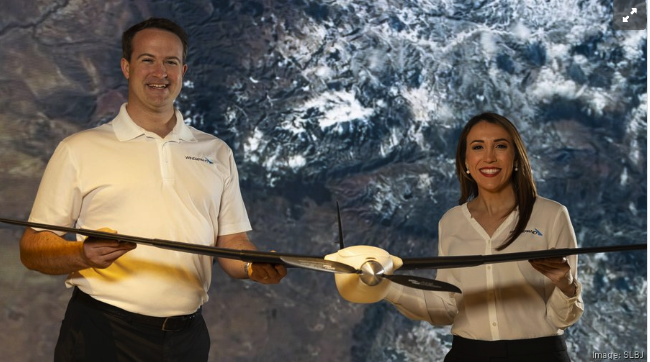
A St. Louis drone startup is increasing production this year in anticipation of a surge in demand as pressure on using Chinese-made drones continues.
WingXpand, which makes low-profile drones that fit in a backpack, said that it was "scaling production at a critical moment," and could fill a gap in the drone market left by bans on foreign-made drones and uncertainty surrounding tariffs.
The U.S. Department of Commerce in January proposed a blanket ban on all drones made in China, which make up around 75% of America's drone market, according to the New York Times. WingXpand said 20 states have banned, or are considering a ban on, foreign-made drones.
"Some of the states are actually saying, 'No, you can't even use what's sitting on your shelf right now, you have to go and replace that with something that's made in the U.S.,'" said Michelle Madaras, the company's president and co-founder. "That really is leaving a lot of the folks that work out in the field, that serve our communities, in a very tough situation. We very much understand that plight."
WingXpand by the end of the year will be able to produce around 1,000 drones a month, which Madaras said is an increase, though she declined to disclose the current production rate. The company manufactures its drones from its headquarters at Ranken Technical College in north St. Louis.
Even without the proposed ban on Chinese drones, the Trump administration's tariffs on Chinese-made goods — which the White House on Sunday announced have been put on hold for 90 days — threaten to make drone production more costly, at the expense of frontline workers who rely on drones to aid in search and rescue, disaster response and infrastructure management, WingXpand said.
Those global economic headwinds present an opportunity for WingXpand.
The company's drones are partially 3D printed and manufactured domestically. And its AI-powered xRAI and xRAID drones start at $14,900, a price that puts them between consumer-grade drones and existing military-grade technologies.
WingXpand markets its drones to law enforcement or public safety agencies as providing the functionality of a helicopter, with a device that can be "deployable from a vehicle trunk — without requiring a traditional pilot, hangar, or six-figure flight budget,"
The company has already seen public sector adoption, landing a "seven-figure" deal with the U.S. Air Force for wildfire detection in 2023, the same year it landed $500,000 in a pre-seed funding round in 2023.
Its drones have onboard artificial intelligence, which Madaras said marked a "generational shift" in technology. They have the ability to detect specified objects based on instructions, such as asking it to search an area for a red truck. That fuctionality reduces the amount of time and money it takes to run a conventional drone.
"What we're doing is really bridging autonomy, AI and robotics: taking it out of just the theoretical and putting it in people's hands to use in real life, deliver insights faster, increase their ability to do their job," WingXpand Co-founder and CEO James Barbieri said. "(Our drones) let the humans do what humans are really good at, which is decision-making, by giving them as much decision aid tools as possible to make their lives easier and to keep them safer."